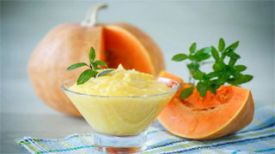The cupping method is a unique treatment method that has been passed down among the people in China for a long time, formerly known as the "corner method". This is a therapy that uses cups and jars as tools to expel the air through hot air and generate negative pressure, causing it to suck on the skin and causing congestion.
Cupping is the most commonly used traditional Chinese medicine natural therapy among ordinary people. When they feel a cold or pain, they will pull out a cupping themselves or find a family member, and the effect is often good. There are many types of cupping tools, such as glass jars, ceramic jars, bamboo jars, rubber jars, etc. The can head bottle at home can also be used for cupping. The glass jar is smooth and transparent, allowing for observation of skin congestion, congestion, blistering, and bleeding during bleeding inside the jar. It is most commonly used in households. Nowadays, many families have a set of vacuum cupping cans, which are simpler, more convenient, and safer than glass cans. However, in terms of effectiveness, glass cans are still better.
How to ignite when cupping? Here are some ignition methods for cupping:
(1) Fire throwing method: After igniting with a small piece of paper, put it into the can. Before the paper is burned out, quickly cover the can on the part that needs to be pulled out, and it can be adsorbed on the body.
(2) Internal fire method: Use tweezers to clamp the ignited alcohol cotton ball, wrap it a few times inside the can, and then take it out. Quickly place the can cover on the part that needs to be pulled out, or you can suck it.
(3) Cotton sticking method: Use a piece of 1 centimeter square cotton, not too thick, slightly soaked in alcohol, stick it in the middle of the inner wall of the jar, then light it, cover it on the selected area, and suck it.
The principle of cupping therapy is to regulate the balance of yin and yang in the human body, relieve fatigue, and enhance physical fitness by dispelling cold and dampness, unblocking meridians, removing stasis, promoting qi and blood circulation, reducing swelling and pain, and removing toxins and heat.
There are many methods for cupping, mainly four types: cupping, flash cupping, walking cupping, and bloodletting cupping. The most commonly used method suitable for families is cupping, and the later methods are more difficult and need to be operated by more professional physicians.
Cupping, like acupuncture and moxibustion and Guasha, belongs to external treatment of TCM and is a good physical therapy. However, unlike acupuncture and moxibustion, cupping requires very accurate acupoint positioning, which is a simple and effective treatment method. Cupping is usually performed at the pain point. The appearance of illness and pain is due to local dysfunction of meridians, such as blockage of meridians and qi. Cupping at the site of illness and pain can adjust the function of meridians, making the meridians unobstructed and painless, thus achieving the goal of treating diseases.
Although cupping has a wide range of applications, it is not suitable for all diseases. Moreover, there are many things to note when cupping:
(1) Cupping can only be performed after removing clothes, so during treatment, it is important to avoid direct exposure to wind, prevent exposure to cold, and maintain indoor temperature.
(2) Pregnancy, menstrual period, muscle wasting, children under 6 years old, elderly people over 70 years old, mental illness, edema disease, heart failure, active pulmonary tuberculosis, acute infectious diseases, diseases with bleeding tendencies, as well as the eyes, ears, nipples, anterior and posterior genitalia, pulsatile areas of the heart, areas where large blood vessels pass through, areas with uneven bones, areas with excessive hair, skin damage, skin scars, skin growths, etc., should not be easily used with cupping therapy. Before the scar on the skin subsides during the last cupping, do not pull again in the same area.
(3) After cupping, if there is redness or itching in the local area of the skin, do not scratch it randomly. After a period of time, it will dissipate on its own. If there are blisters, water droplets, bleeding points, congestion, etc., they are all normal treatment reactions. Light blisters only need to be prevented from scratching and allowed to absorb naturally; When the blister is large, a disinfectant needle can be used to puncture the root of the blister to release water, and disinfectant gauze can be applied to prevent infection.
(4) For severe, deep, and painful conditions, the cupping time can be slightly prolonged; For areas with thicker muscles, the duration may be slightly longer; When the climate is cold, the cupping time should be appropriately extended, and when the weather is hot, it should be correspondingly shortened.
(5) When using multiple jars at once, the distance between the jars should not be too close, otherwise the skin will experience pain due to being pulled by the jars, and the jars will also push against each other, making it difficult to pull them out firmly.
Cupping, traditional green health therapy
Release time:2024-05-22 22:03:41
Reading:187
Word Count:5105
Subscribe to email


